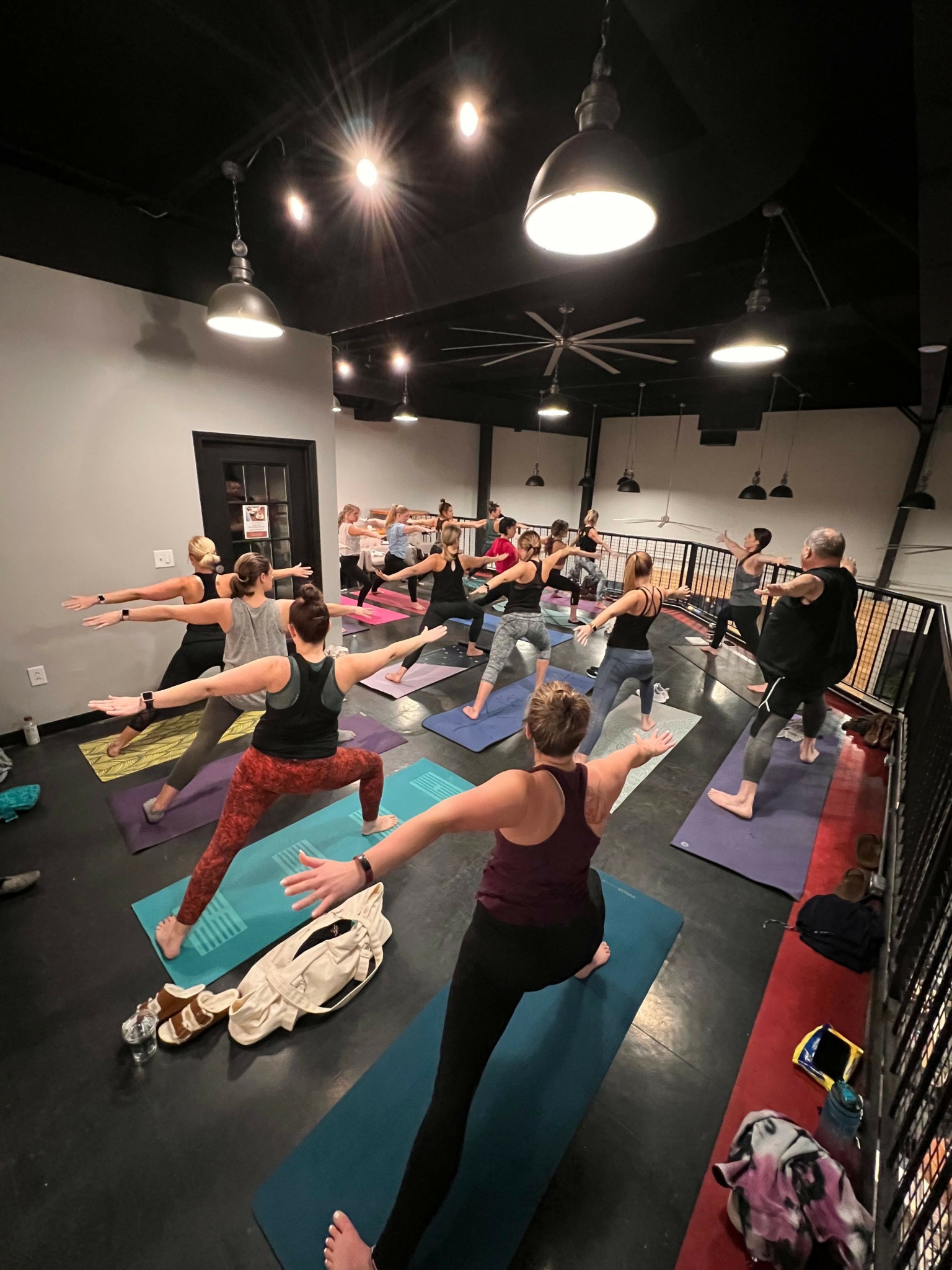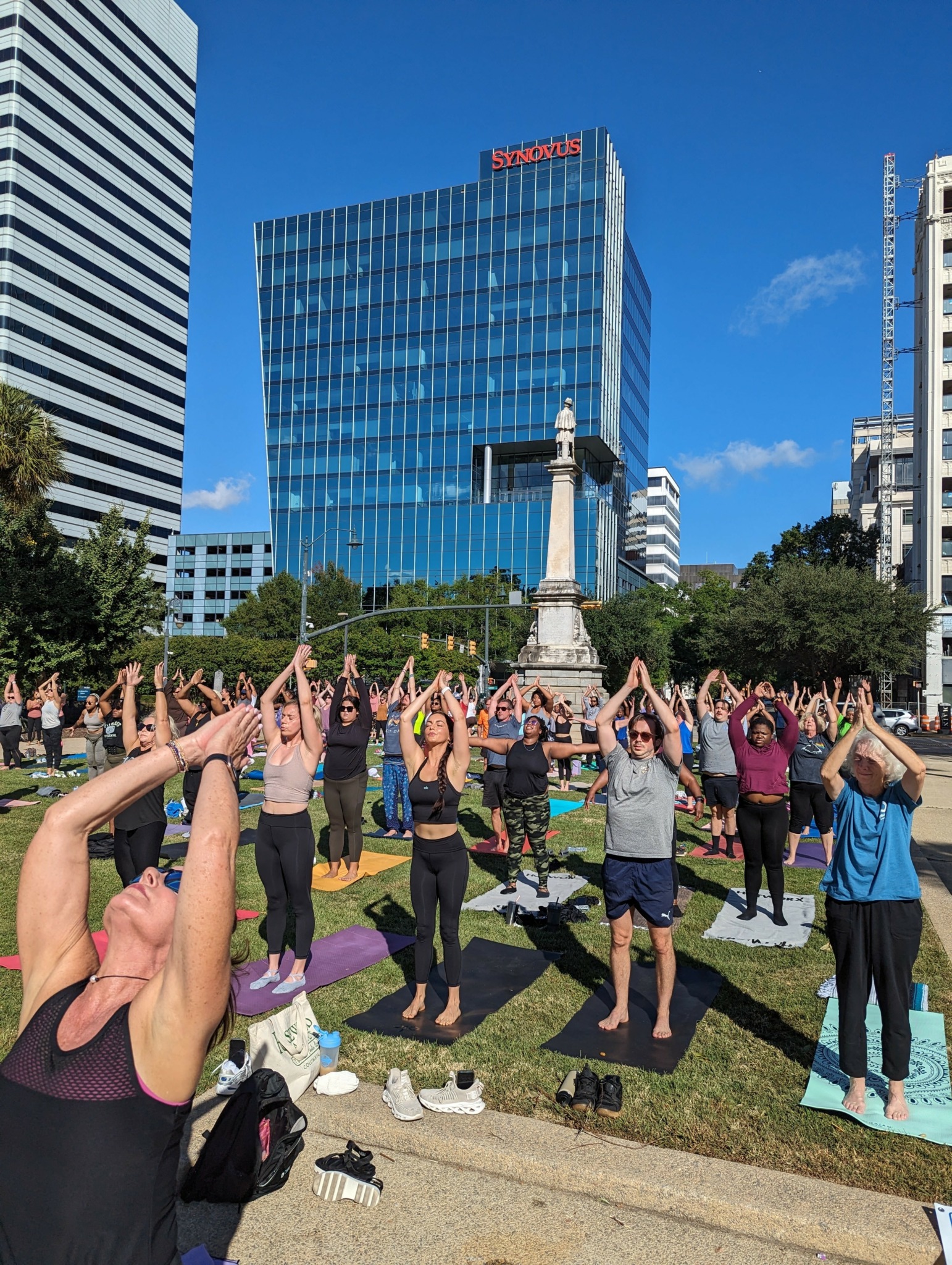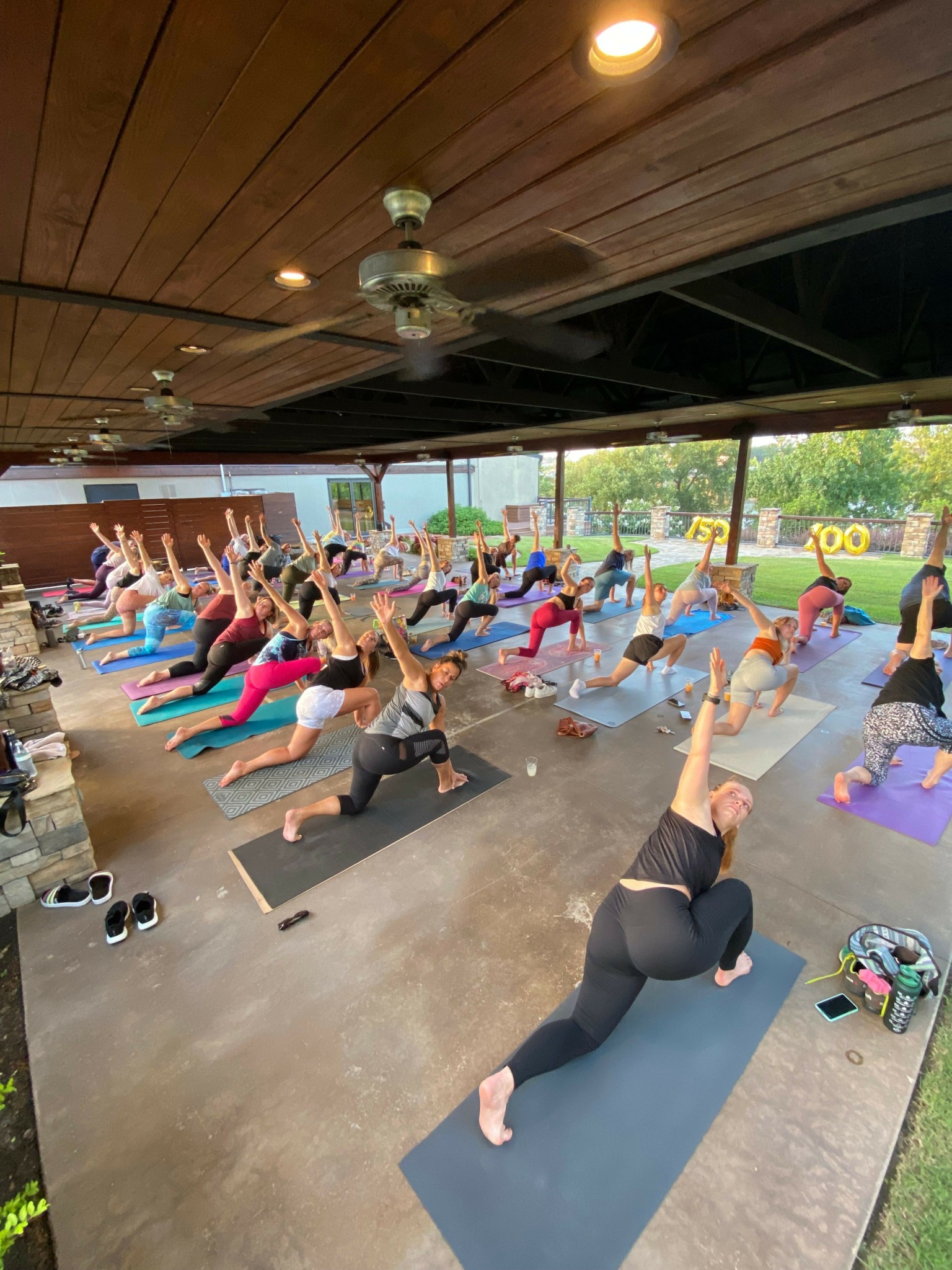We caught up with the brilliant and insightful Sallie Vaughan a few weeks ago and have shared our conversation below.
Sallie, thanks for joining us, excited to have you contributing your stories and insights. Can you open up about a risk you’ve taken – what it was like taking that risk, why you took the risk and how it turned out?
In 2018, I took a leap into the unknown. I opened a pop-up yoga business with no formal business background, no roadmap, and—if I’m being honest—no idea what I was doing. What I did have was a passion for movement linked to purposeful breath, a deep belief in the power of yoga, and a willingness to meet people where they were—literally.
At the time, yoga was often perceived as an exclusive practice, reserved for the hyper-flexible, ultra-serious, or deeply spiritual. But I knew yoga had the ability to reach everyone—even those who would never set foot in a traditional studio. So, I took a risk and flipped the script. Instead of asking people to find yoga, I brought yoga to them—in breweries.
Beer yoga became my unconventional entry into the industry. Participants balanced bottles on their head in tree pose, took sips in warrior II, and laughed through every wobble. It wasn’t traditional, and it certainly wasn’t what the yoga world deemed “proper.” But it worked. People who had never rolled out a mat before kept coming back—not just for the beer, but for the realization that yoga was for them, too.
What started as a wild idea turned into something bigger than I imagined. I built a following, expanded my offerings, and proved to myself that risk, when rooted in purpose, can lead to something incredible. I didn’t just start a pop-up yoga business—I redefined what yoga could look like for people who never thought it was meant for them. And that? That was worth every risk I took.

Great, appreciate you sharing that with us. Before we ask you to share more of your insights, can you take a moment to introduce yourself and how you got to where you are today to our readers.
I reached out to Craft & Draft on Devine in Columbia, SC, and asked if I could teach a class there on a Sunday morning, an hour before they opened. They said yes, and just like that, my business was born. In the beginning, everything was done the old-fashioned way—participants sent an email to join, signed a paper waiver before class, and paid $10 in cash. We even brought yoga mats for participants to borrow for class and cleaned them before every event. It was small, scrappy, and built purely on word-of-mouth. Most of my first year was just friends showing up to support me, bringing their own friends along, and slowly, class by class, my community grew.
Now, things look a little different—our processes are streamlined, everything is electronic (thank goodness!), participants are required to bring their own yoga mat, and I rarely see those initial friends at my classes anymore. It’s a good problem to have, but I do miss them! If they’re reading this, just know I wouldn’t be here without you.
What really sets me apart is my willingness to have fun. Yoga doesn’t have to be rigid or intimidating—it can be playful, lighthearted, and designed for real people with real lives. That philosophy resonated with my audience and helped me establish not just a business, but a brand that people enjoy coming back to.
I’m most proud of the community we’ve built—one that started with a few friends supporting a wild idea and has grown into something so much bigger. You just have to show up on your yoga mat. And if you’re willing to show up on a yoga mat, you might just find something amazing waiting for you on the other side.

What do you think helped you build your reputation within your market?
I built my reputation by showing up. In a world where pop-up fitness events can feel sporadic or one-time-only, I made it a point to create something consistent and reliable. We don’t just offer occasional classes here and there—we show up, week after week, building a space where people know they can come as they are. Although teaching yoga is my side business, I approach it with the dedication and professionalism of a full-time commitment. I prioritize consistency and reliability, rarely canceling classes except in the case of severe weather. When I ask my students to show up, I hold myself to the same standard, ensuring that I am always present and dependable. That approach helped me build trust. People know they could count on my classes happening regularly, and that built a loyal community.

Any advice for growing your clientele? What’s been most effective for you?
The most effective strategy for growing my clientele has been getting out into the community—meeting local business owners, building relationships, and finding creative ways to introduce more people to yoga. Sometimes, that means putting myself out there, offering free classes, and trusting that if I create something meaningful, the right people will find it.
One of the best examples of this has been our free classes on the grounds of the South Carolina Statehouse since 2022. These classes have not only helped grow our name but have also brought in fresh faces every time we teach there. By making yoga accessible in such a public, welcoming space, we’ve been able to reach people who may have never considered stepping into a traditional studio.
Beyond just movement, we’ve always encouraged a spirit of giving back to local businesses. Whether it’s grabbing a coffee at the venue before class or staying after class with friends for dinner, we want these classes to be more than just the 60 minutes of movement —they’re about creating connections beyond the mat. That kind of intentional engagement has been key to our growth, helping us not only expand our clientele but also deepen our impact.
Contact Info:
- Website: https://www.eventbrite.com/o/good-company-yoga-26420154493
- Instagram: https://www.instagram.com/goodcompanyyoga?igsh=cHJjbmNkMjU3NHY5&utm_source=qr
- Facebook: https://www.facebook.com/share/1AQ23kC7L5/?mibextid=wwXIfr




Image Credits
Anna V Photography
Kylie Guyton Photography


